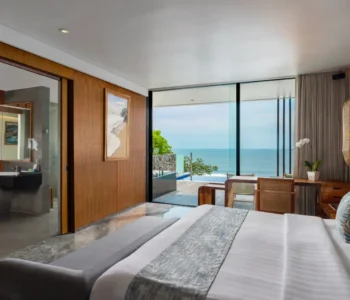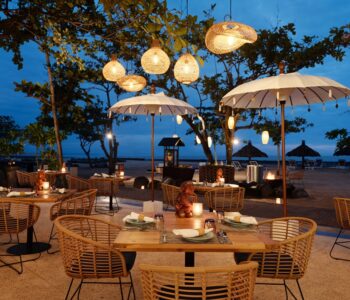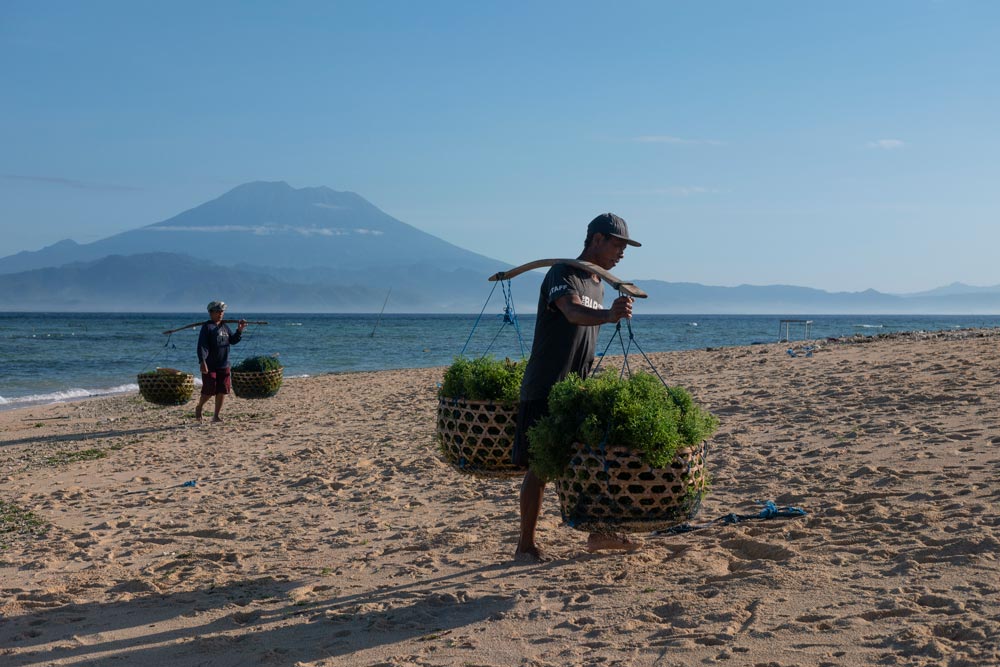
Nusa Lembongan and Nusa Ceningan are still underrated destinations. Diverse environments, outdoor experiences and interesting local life are concentrated on these two tiny little isles, topped with just enough modern conveniences to make them the ultimate island escapes.
We often perceive destinations out at sea as hard to reach, the waters separating here and there an illusion of distance, but Nusa Lembongan and Nusa Ceningan are a mere 40-minute fastboat ride from Sanur — faster than driving from Kuta to Ubud nowadays! After a short trip across the Badung Strait, what awaits at the other end is a world of its own.
The two islands are dwarfed by the neighbouring, now more popular, Nusa Penida. Nusa Lembongan only 8 square kilometres and Nusa Ceningan only 3.7 square kilometres. But, for little islands they present such variety: big enough to feel like you’ve got plenty to discover, small enough to feel like you can discover it all. A microcosm of mainland Bali.
Most of the fastboats shore up on the northern half of Lembongan and passengers must cautiously step barefoot into the softly rolling swells and wade their way up to the beach. It’s an instant transition into island life: shoes off, toes in sand, sun on your neck.
The rustic arrival foreshadows the rest of the islands’ infrastructure, i.e. minimal. Scooters, pushbikes and pickups converted into shuttle buses are the main mode of transport, zipping up and down the dusty village roads. It’s all part of the charm, and for those confident enough to rent a scooter, riding (carefully) from one area to another invokes a real sense of freedom.
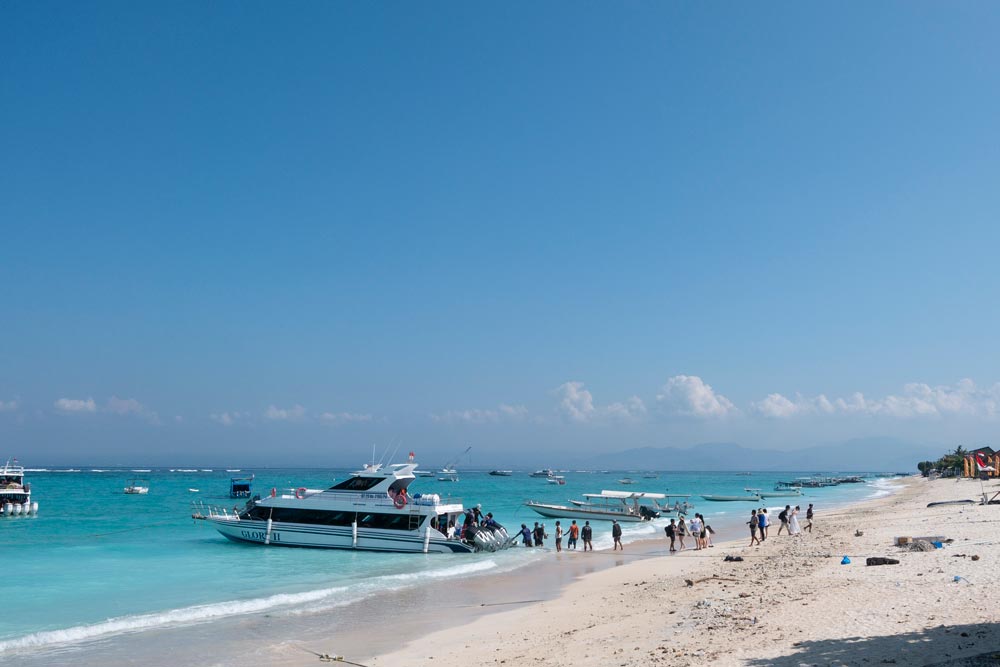
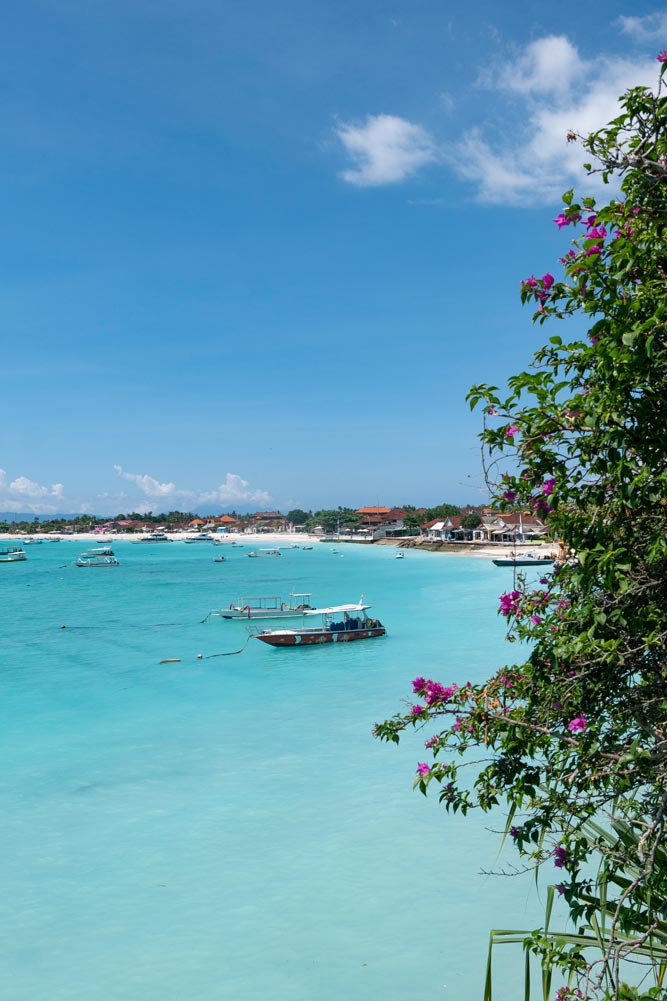
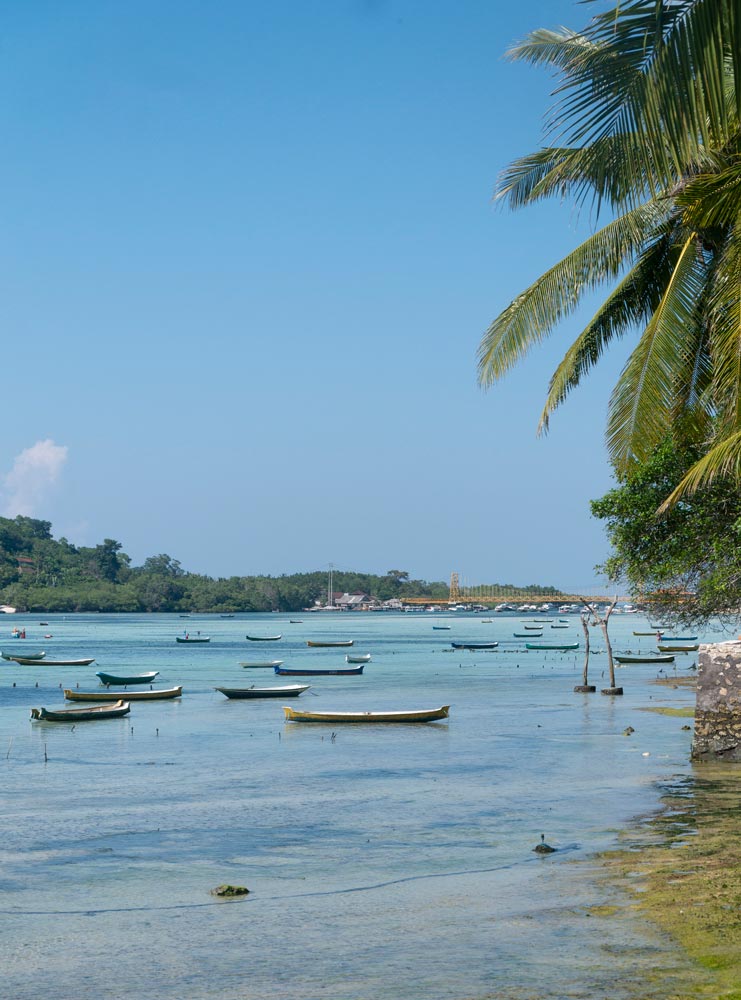
Most of the good hotels and restaurants are situated on the coast and there’s no questions why. The waters enveloping these islands shine bright blue and crystal clear, glistening under the sunlight. The islands’ edges transition from white sand shores to hidden bays and craggy headlands, plus a mangrove forest covers the northern tip of Lembongan. The interiors of both islands rise into rugged hillsides, dominated by bushland and villages that paint an atmosphere of their own. Peppered between the hotspots are quaint cafés, eateries, homestays and dive centres.
Beaches are a mainstay on Lembongan, with plenty of choices. The first is the east-facing Jungutbatu Beach running the length of island’s top half, it’s where you’ll find rows of relaxed beach clubs and rustic beach bars. These aren’t like anything on mainland Bali, just simple laidback venues with daybeds serving food and drinks, maybe a swimming pool, opening straight onto the white sands. The coastline corners off into White Sand Beach, a calm shoreline graced with views of Mt.Agung, standing tall across the waters, most majestic come sunrise. This beach continues all the way down the north coast until it meets the opening of an estuary, from which point the dense mangrove forest takes over.
At the very end of Mangrove Beach a cooperative by the name of Surya Mandiri offers tours through the narrow channels between these tangling estuarial plants. Head in unaccompanied on a standup paddle board or kayak for an adventure with friends, otherwise one can rent a boat and guide to take you through. The best time is in-between tides, when the roots of the mangroves are visible and make for a more picturesque journey. There’s not much diversity when it comes to views, but there is a palpable stillness in these thickly forested channels, a soothing float under cocooning canopies and then out into the shallow and shining sea.
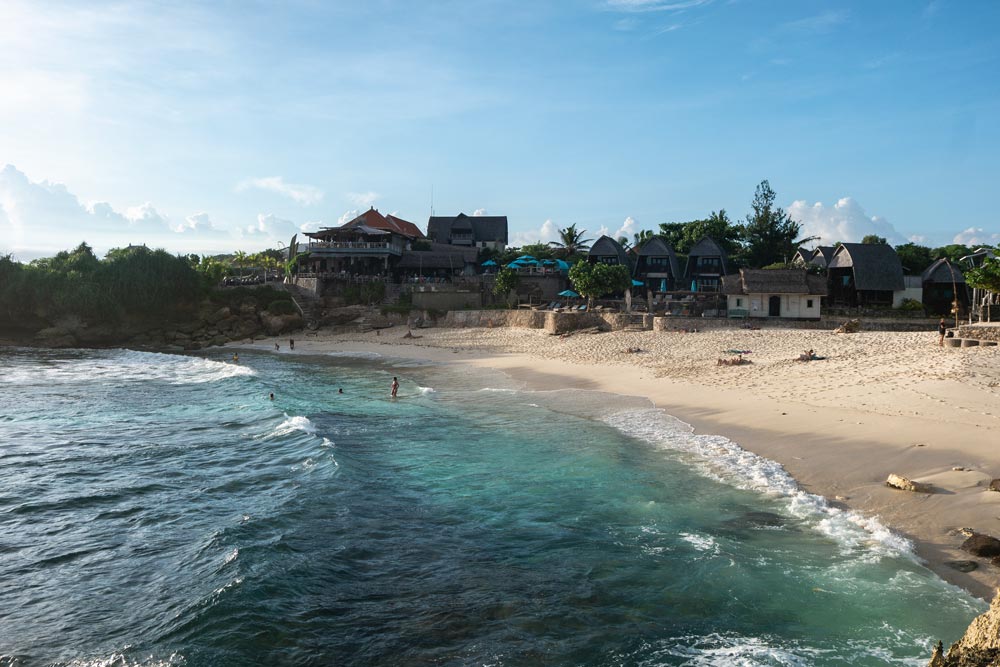
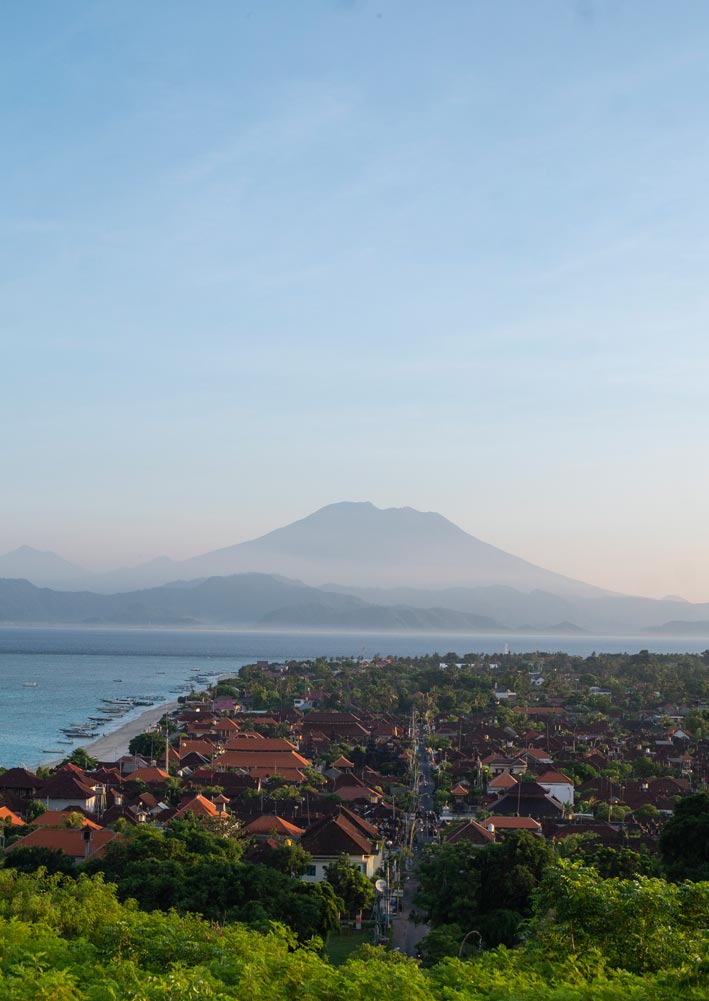
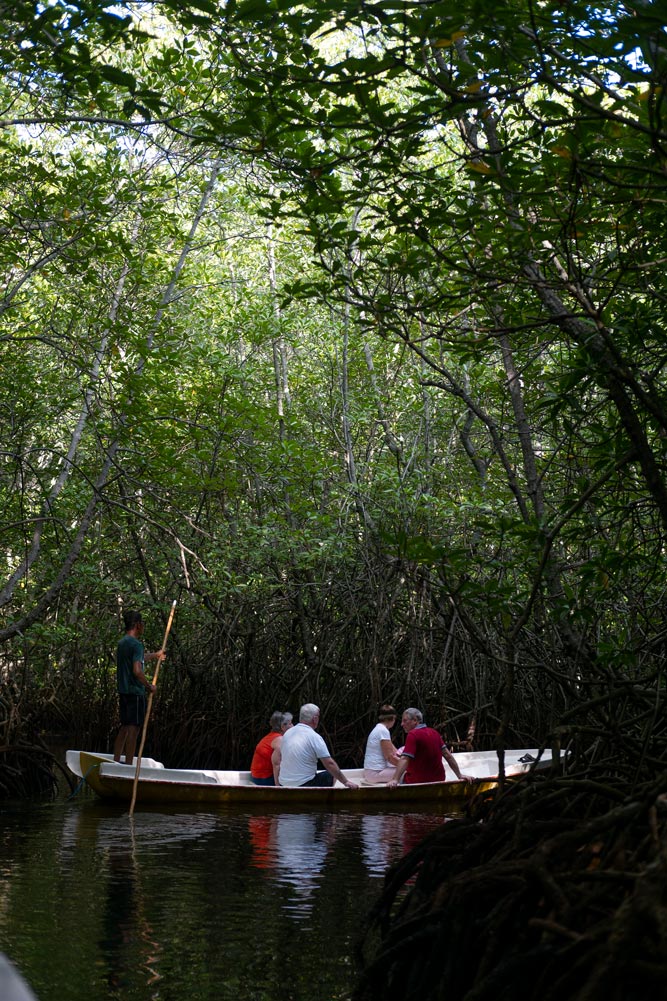
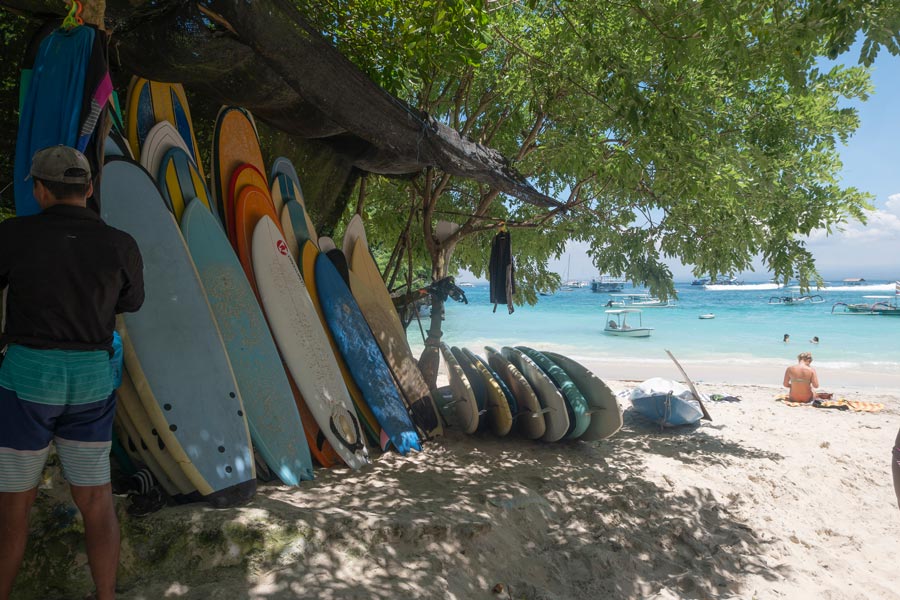
The Mangrove Beach area is also a great spot for some off-shore snorkelling with its calm, clear waters. The same cooperative offers boat hires for those who wish to head out a little further, otherwise all down the beachfront one will find casual local eateries also offering snorkelling gear to hire.
The other more mainstream beaches on Lembongan include Tamarind Beach, Mushroom Bay, Sandy Bay and Dream Beach, all of which have some hotels and/or restaurants nearby but visitors are welcome to settle on the sand as they please. For something a little off the beaten track, a tiny bay by the name of Song Lambung Beach is a favourite amongst surfers, as it offers the best access to ‘Playgrounds’, Lembongan’s most popular surf break.
A great rule of thumb when it comes to beaches is noting which direction they face. Typically, north-facing beaches are calmer (tide and season depending of course), whilst those facing southwest (Sandy and Dream) tend to have stronger currents and larger waves as they welcome deep, rolling swells directly from the Indian Ocean. This explains much of the west coast topography across Lembongan, Ceningan and even Penida, as millennia of exposure to these waves has shaped these coastal areas into the dramatic cliff sides they are today.
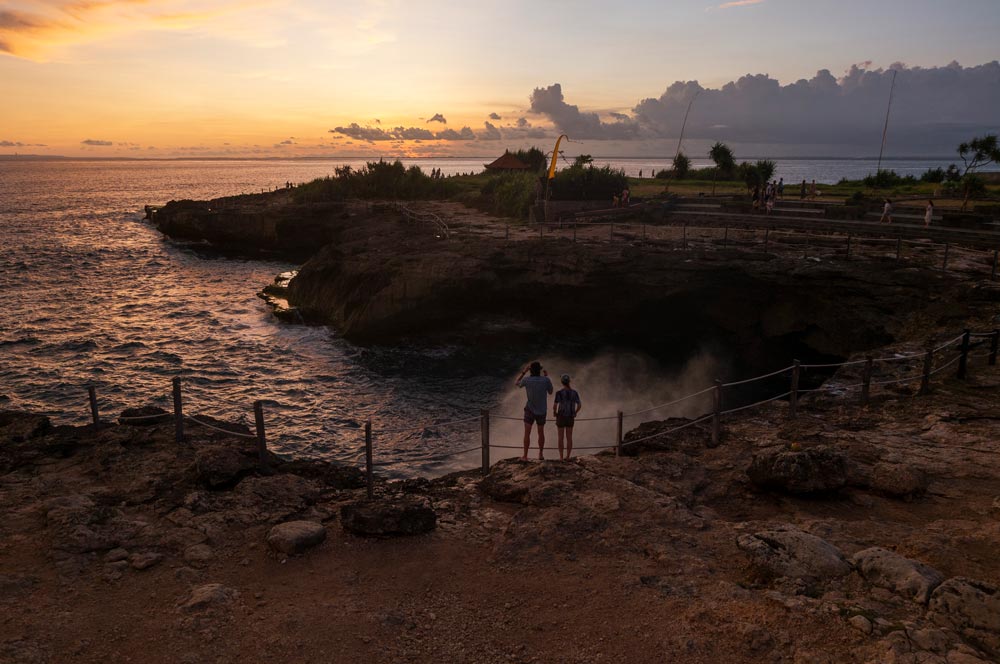
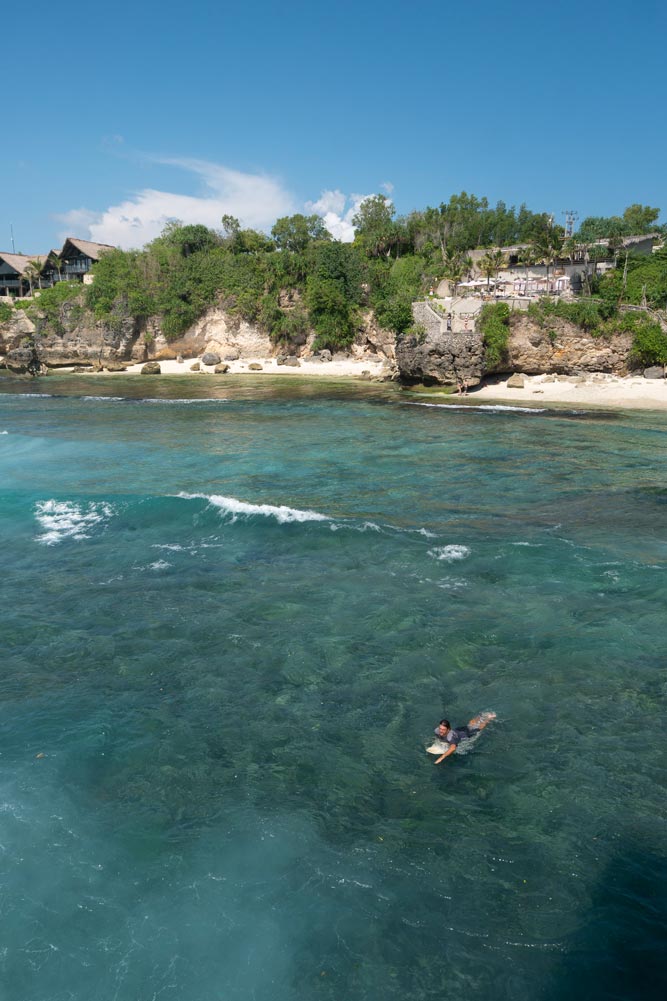
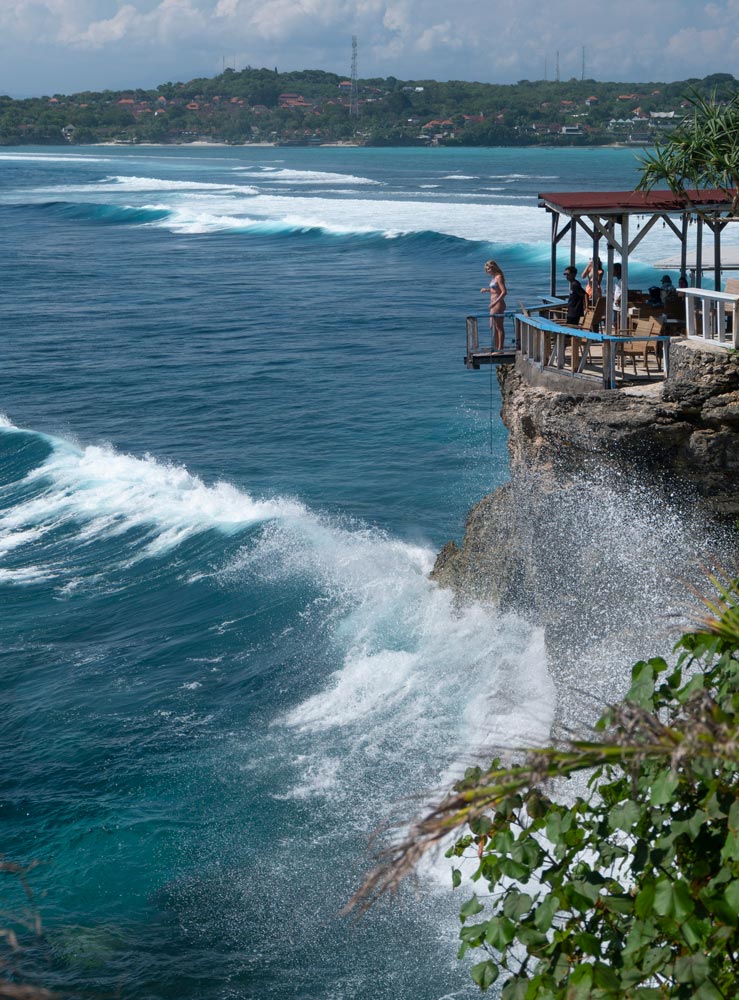
A great example of this is seen at Devil’s Tears, also on Nusa Lembongan. The most striking rocky headlands of the island where thick swells heave towards the alcove, crashing into the rocks and exhaling sea spray into the air in dramatic fashion. Devil’s Tears is a ticketed tourist area, but come sunset it is quite a stunning sight to behold, especially for first timers.
Over on Nusa Ceningan, a different clifftop experience awaits. At Mahana Point, another popular surf break, adrenaline junkies can take a leap of faith: cliff jumping into the deep blue! At one’s own risk of course, two heights of cliff jump are available, 10 metres and 5 metres, a real test of mettle but certainly a memorable experience. Sheltered by this headland is Secret Point Beach, one of the calmer sandy beachfronts of Ceningan, above which stands the hottest new lifestyle destination, Suku Beach Club.
A unique aspect of local life is found between the two islands, in the narrow channel through which the sea squeezes on the daily. Beneath these waters are abundant seaweed farms, identified by the quadrants of dark green that shadow the seafloor.
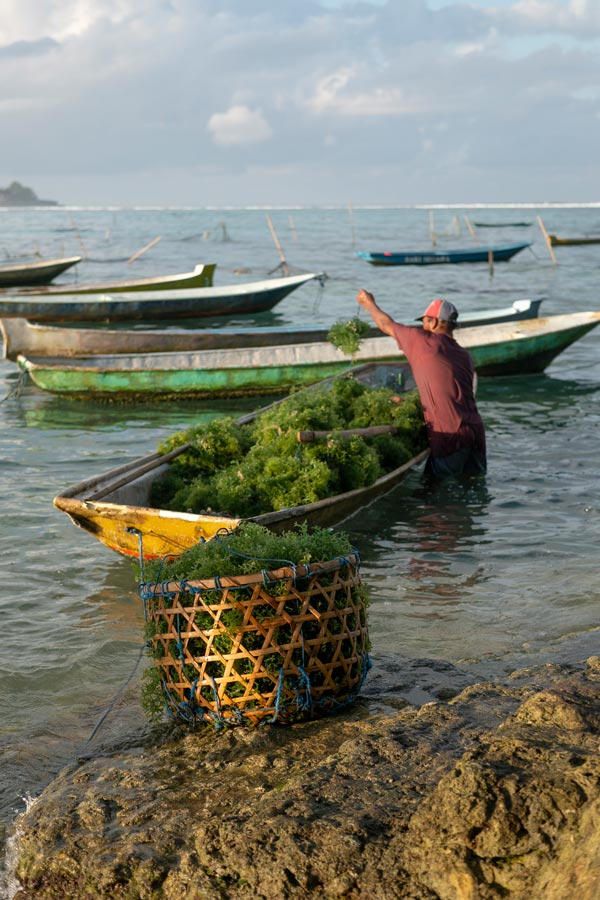
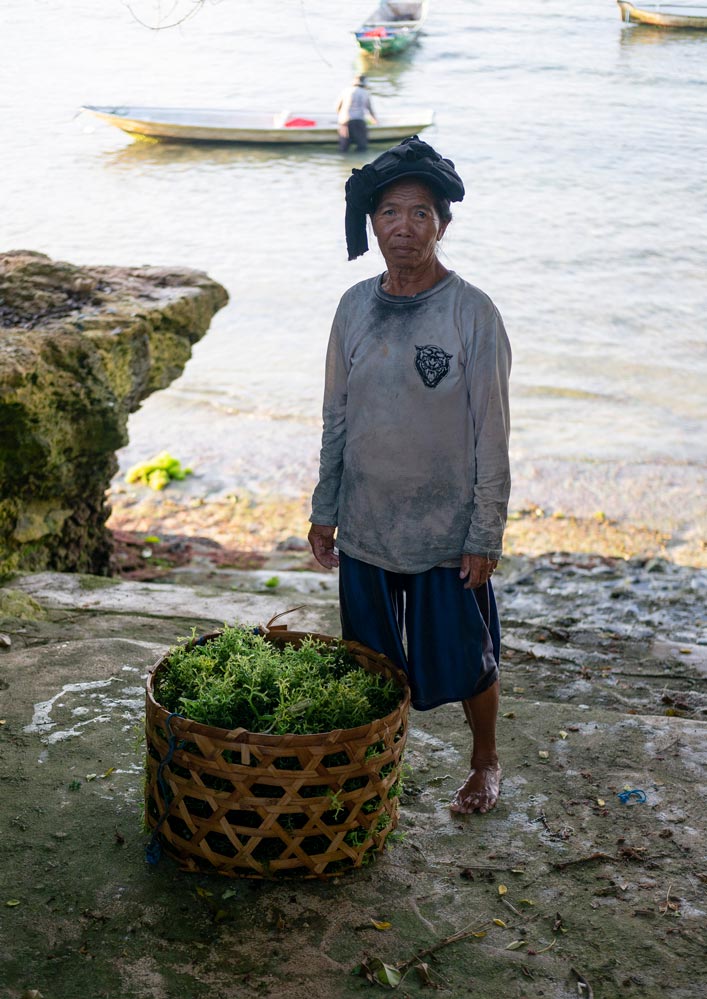
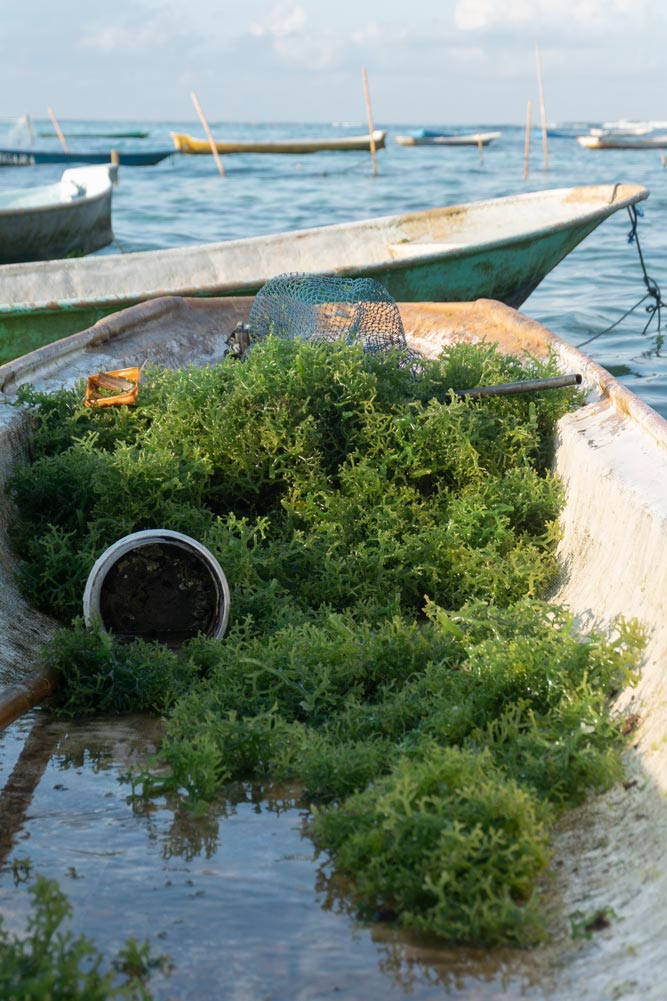
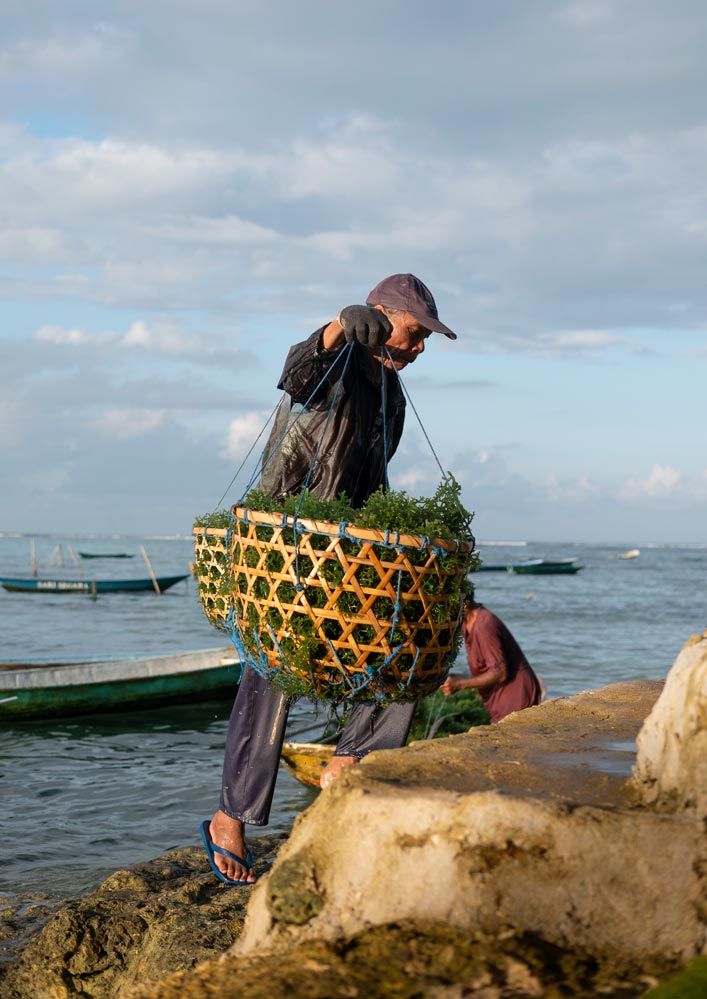
Every morning the seaweed farmers trudge through the shallows to harvest their ocean crop, picking out bunches of seaweed and filling up their little bobbing boats. When they return to shore, they haul baskets (40kg each!) onto flatlands and dry under the sun. “The price is around IDR 14,000 per kilo,” says 62-year old Jero Mangku I Wayan Siteng. “That’s for the dry weight… our hauls lose 90% of their weight once they’ve dried,” adds the Lembongan local.
He says most of the seaweed is used for the skincare industry abroad, and sold off at a lucrative price. Not that Pak Wayan and his friends see much of that. He shares that very few young people are continuing this work now, including his three kids, as tourism and hospitality jobs offer better opportunities. Yet, it’s hard to imagine this little channel without its iconic seaweed farms. Visitors should take a moment to see them whilst they remain, best at around 7am when the morning sun is low can cool.
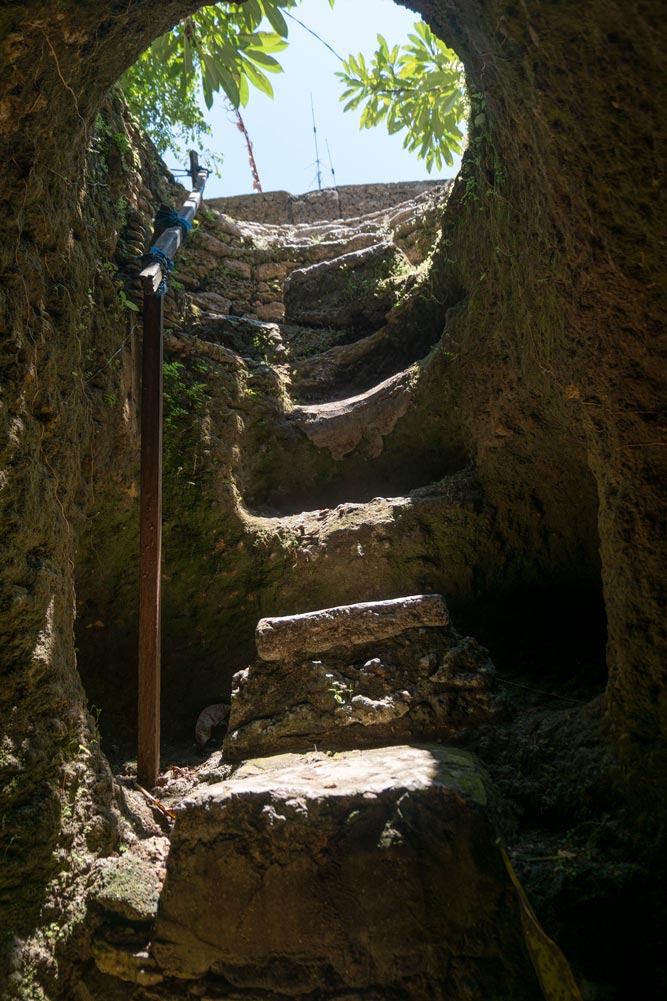
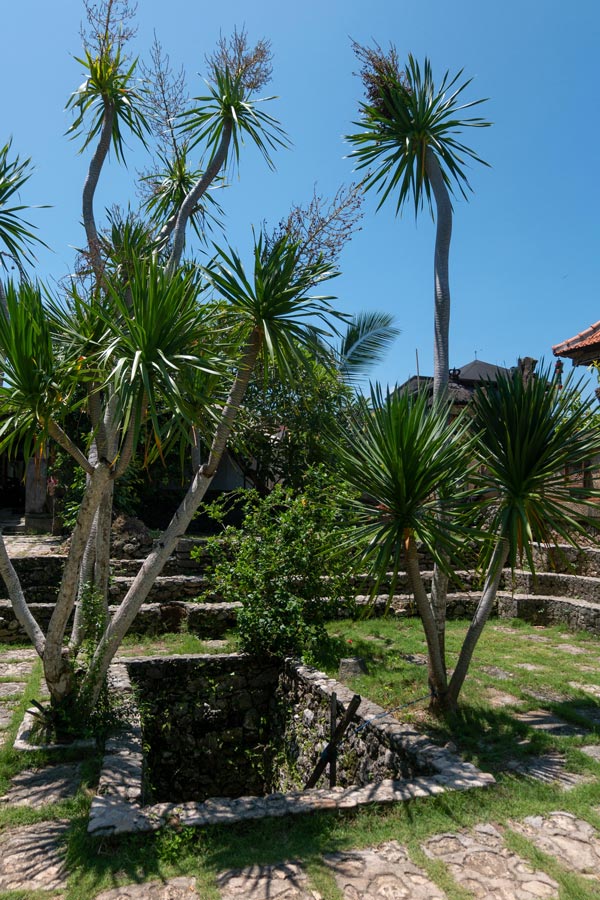
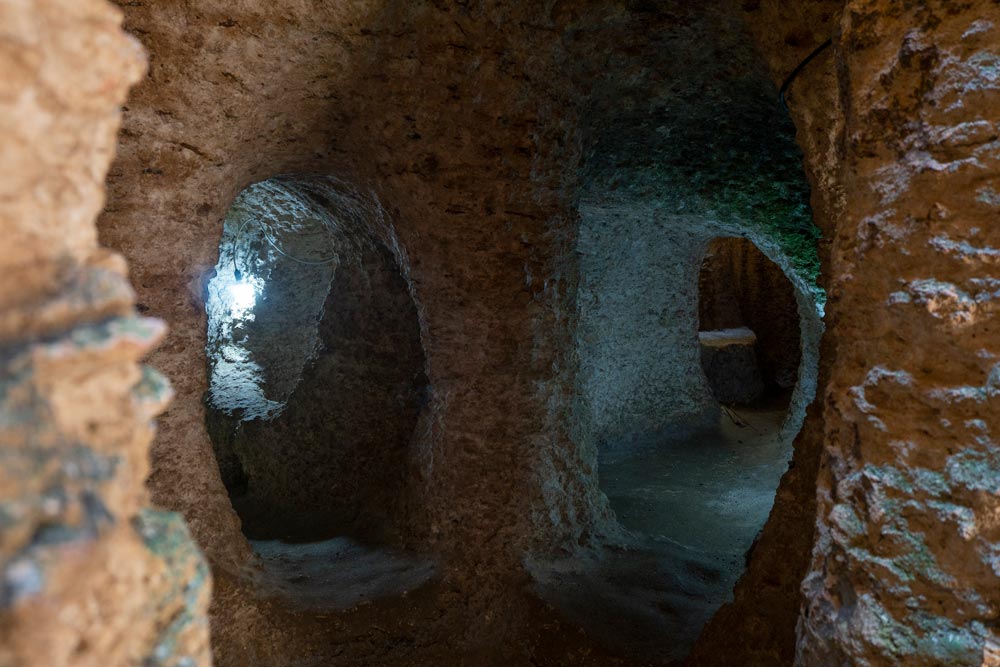
Another intriguing local site on Lembongan is the Gala Gala Underground House. This unique destination is a manmade network of caves made by a puppet master (a dalang, considered priestly), Mangku Dalang Made Byasa. He sought to make a place of meditation inspired by a story in the great Hindu epic, the Mahabharata. It took him 15 years (1961-1976) to manually dig a network of caves across a 500 square metre area, which visitors can explore. It’s no main attraction, but a fun little sightseeing spot to check out for an hour.
These islands are also known for diving. A great starting point to explore the wonders under the sea, including the waters around Nusa Penida and its famous Manta Point. Those interested will find many PADI-certified dive centres.
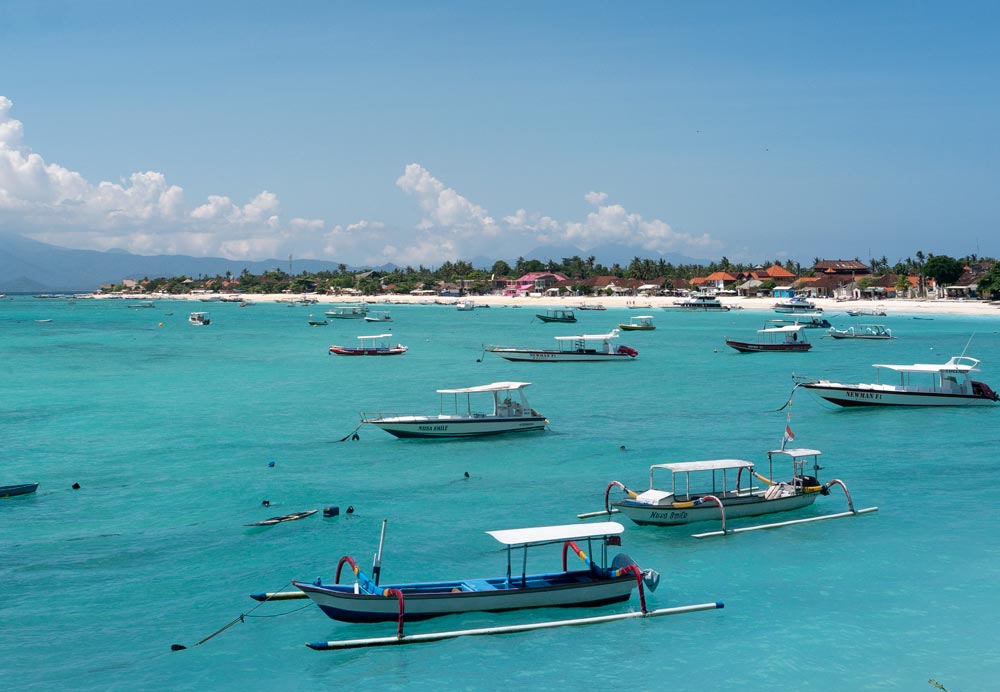
What Nusa Lembongan and Nusa Ceningan offer every visitor is a particular feeling: real ‘island living’. It’s very palpable, and something we often search for when on such a getaway. The charm comes from how rustic these islands are that invoke a combination of ’small town’, ‘away from it all’, ‘leave your troubles behind’. The freeing drives between bays and little clifftops, serene morning beach walks, watching the shadows of swells roll beneath a dusking sky. Moments of peace, of freedom, that make the journey across the straits worth it.
Of course… on top of all that, you’ll find a handful of beautiful villas, quality restaurants, bars and beach clubs that offer all the comforts one needs for a great island getaway.



